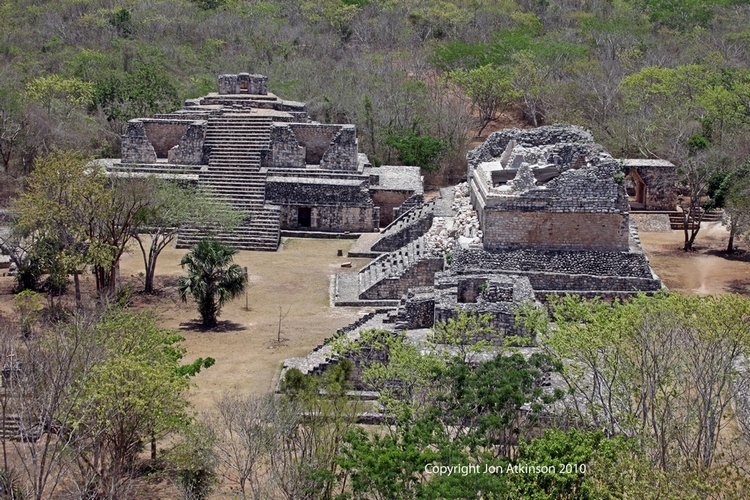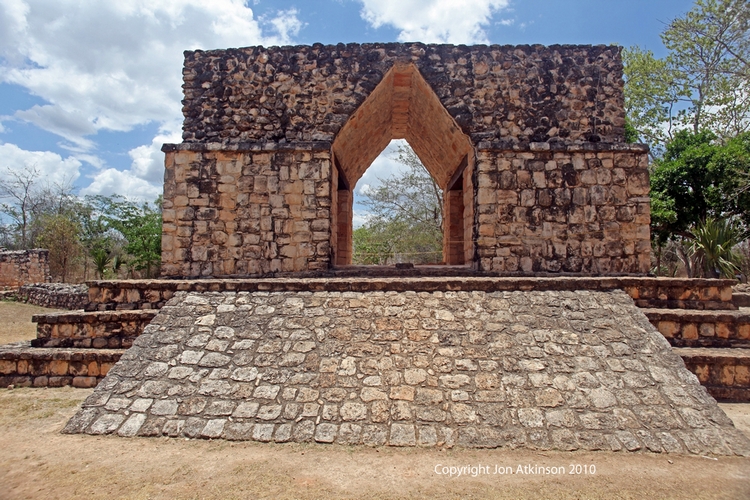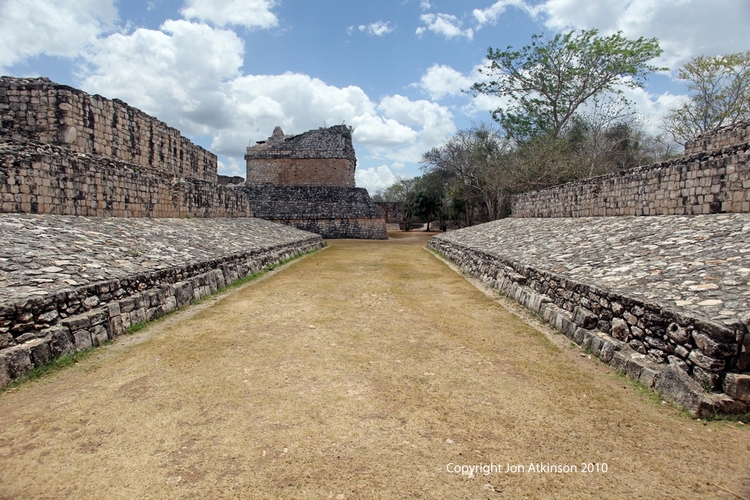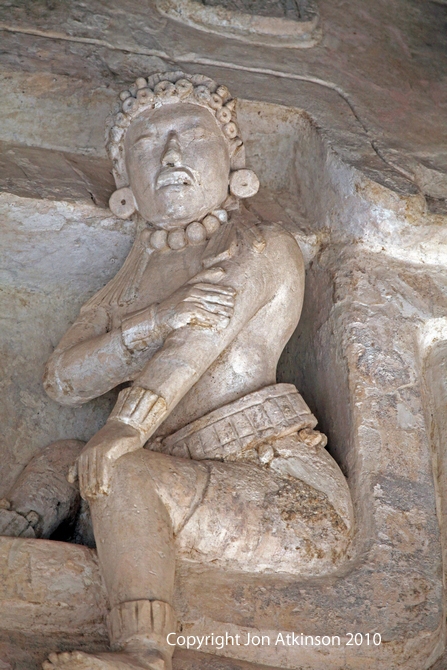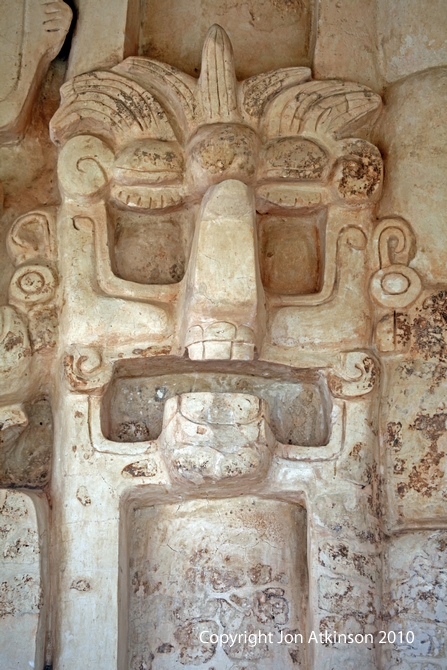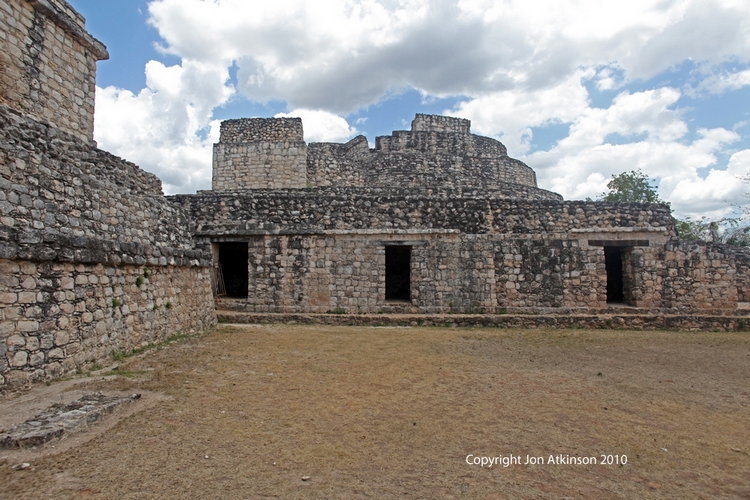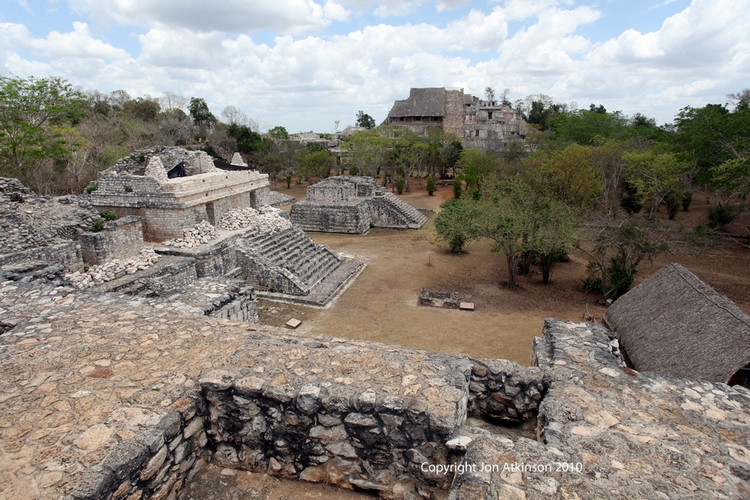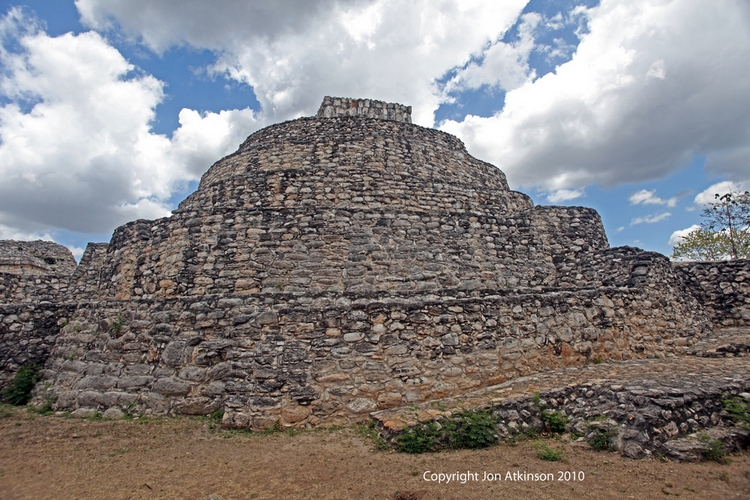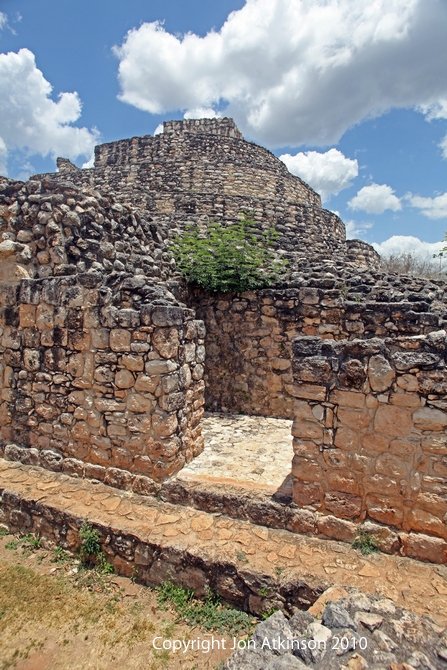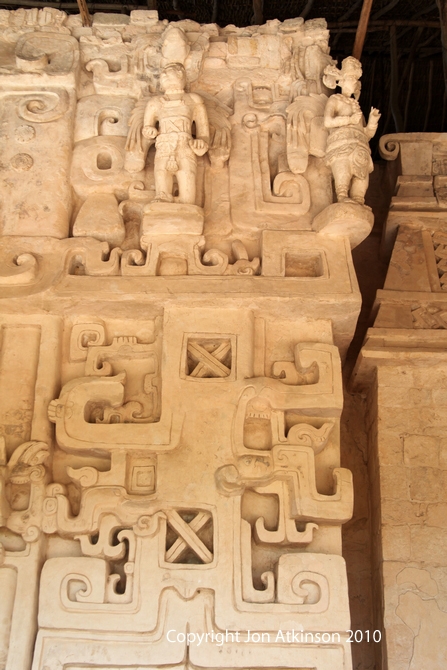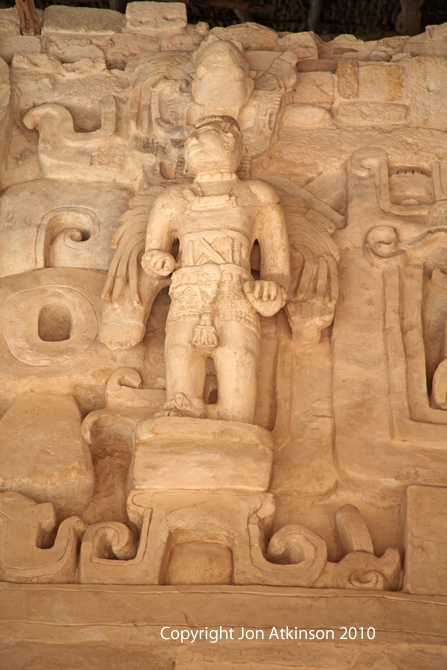Ek Balam 1 - View from top of main Pyramid: Ek Balam is a Yucatec Maya name that is translated as "the black jaguar" or "bright star jaguar." Dating from 100 BC the most important cultural period at Ek Balam was the late classic between 700 and 1000 A.D when it had a population of more than 15,000 inhabitants. |
Ek Balam 2 - Entrance Arch: Ek Balam has a beautiful arch connecting to a sacbe (ancient road). In ancient times, these sacbes connected the Maya kingdoms. The arch is found where these sacbes intersect the entrance to the city. The roads connected the city with other Maya cities and with the temples and pyramids of the center. |
Ek Balam 3 - Ball Court: One of the most identifiable structures is the Ball Court, which resembles those at Chichen Itza and other Mesoamerican sites. In the most widespread version of the game, the players struck the ball with their hips, although some versions allowed the use of forearms, rackets, bats, or handstones. The ball was made of solid rubber and weighed up to 4 kg (9 lbs) or more, and sizes differed greatly over time or according to the version played. |
Ek Balam 4 - Stucco figure, Ek' Balam: The difference with Ek Balam's "El Torre," is that the decoration of it's building facades was not done with carved stone figures as at Uxmal or Chichen Itza but instead with stucco and limestone mortar modeled into distinct forms and then painted.
| Ek Balam 5 - Ball Court, Ek' Balam: The rules of the ballgame are not known, but judging from its descendant, ulama, they were probably similar to volleyball where the aim is to keep the ball in play. |
Ek Balam 6 - Stucco figure, Ek' Balam: The Acropolis was both a temple and a palace, which features remarkably well-preserved carvings about two-thirds of the way up. These decorate the exterior of the Tomb of Ukit Kan Le’k Tok’ and are astonishingly well preserved and ornate.
|
Ek Balam 8 - View from top of main Pyramid Ek' Balam: The Acropolis is a massive structure with dimensions over 160 meters long and 60 meters wide which makes it one of the largest structures ever excavated in the Yucatan and is more than twice the size of “The Castle” at nearby Chichen Itza. The core site is about 5000 meters in circumference surrounded by 2 low lying walls. |
Ek Balam 9 - Oval Palace, Ek' Balam: The building is asymmetrical and the reason that it was built is a mystery, but one possible use is that it may have been used in astronomical ceremonies or observations. |
|
Ek Balam 10 - Oval Palace: The Oval Palace is very similar to the Pyramid of the Magician at Uxmal which was long considered unique. The Palace may have had a residential role, with 15 exterior doorways leading into individual, windowless rooms with remarkably smooth and flat floors. |
Ek Balam 11 - Jaguar Altar Carvings: An unusual aspect of the tomb are large statues of what look like winged warriors and also bring to mind Christian angels even though the figures were carved hundreds of years before Spanish conquistadors brought Christian iconography to the region. |
Ek Balam 12 - Jaguar Altar Carvings: The elaborately-carved tomb of Ukit Kan Le'k Tok' is the main draw of the Ek' Balam archaeological site. |

